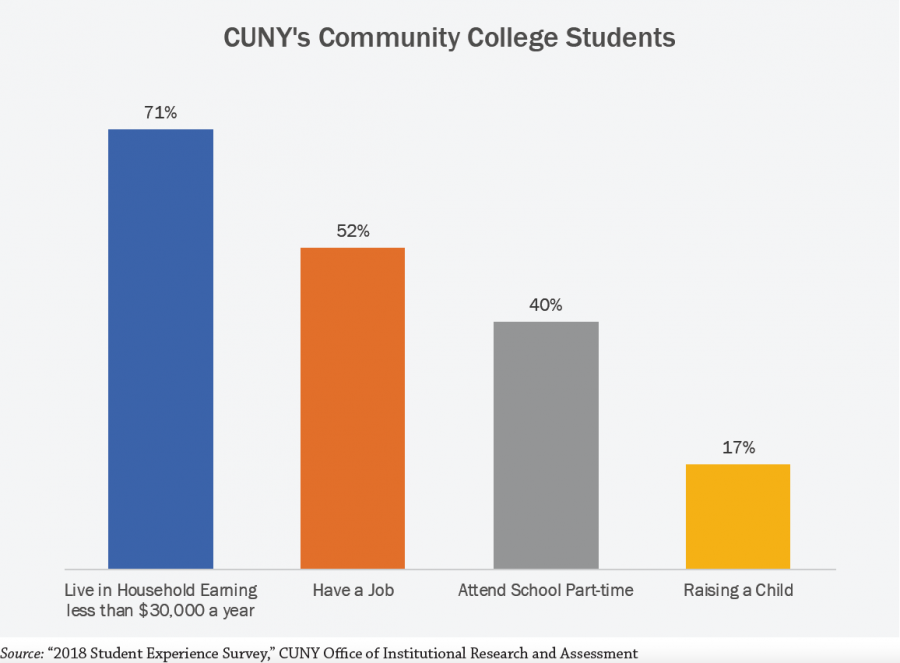CUNY students found to face financial struggles besides tuition
September 4, 2021
The Center for an Urban Future found that nontuition expenses like MetroCards, textbooks, technology and childcare are barriers to CUNY community college students and contribute to the thousands of students that drop out each year without a degree.
Within the report, the New York City-based think tank wrote direct recommendations to state officials and CUNY on how to help these students overcome financial burdens and to ensure that fewer students drop out of community college due to nontuition burdens.
“This is a solvable problem but CUNY can’t tackle this alone,” Eli Dvorkin, editorial and policy director of the Center for an Urban Future, said. “To rebuild a more equitable New York City, city and state leaders should focus on boosting college success. This means helping more students overcome these nontuition financial barriers.”
Research by the CUNY Office of Institutional Research and Assessment found that of the population of CUNY’s community college students, 71% live in households earning less than $30,000 a year, 17% attend school while raising a child, 52% are working and 40% attend school part-time.
“The cost of going to college isn’t just the cost of tuition,” CUNY student Darleny Suriel said.
“It’s the cost of MetroCards, it’s the cost of food, it’s the cost of books, it’s just the cost of living.”
A large number of students face nontuition issues that bar them from finishing a degree, and therefore, have less access to better-paying jobs in the future.
Apart from just tuition assistance, the Center for an Urban Future suggested that low-income students mostly succeed in college because of the help they receive with nontuition costs by being a part of programs like CUNY ASAP.
CUNY ASAP helps students seeking associate degrees. However, not every student receives this kind of support.
The Center for an Urban Future outlined what New York City and New York State should do. According to the report, the first step is to take note from other models across the country like California, which offers financial aid grants for nontuition burdens like housing and childcare to low-income students.
“City leaders can act boldly to protect and expand the highly successful CUNY ASAP model to every community college student, which over time could result in more than 16,000 additional community college graduates every year,” the report stated.
Other proactive options the Center for an Urban Future suggests is providing all community college students with a free MetroCard and restoring Single Stop centers, which offer a full range of support services.
“The State Legislature can also play a major role in supporting college success by striving for free tuition while embracing lower-cost alternatives that reduce nontuition barriers and expand TAP to serve more low-income students,” the report also stated.








